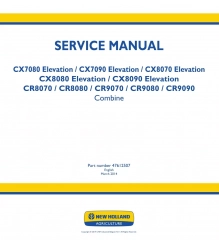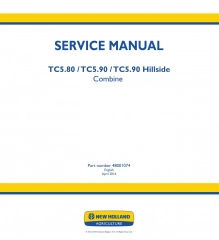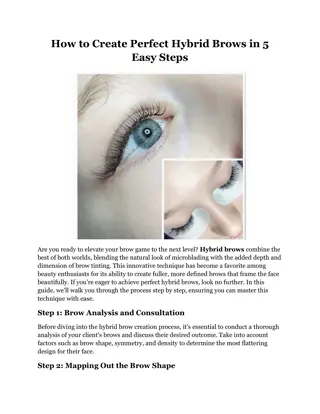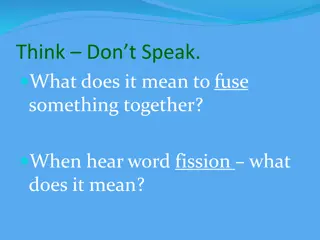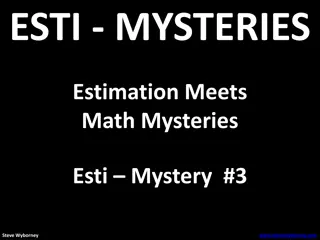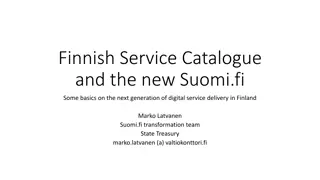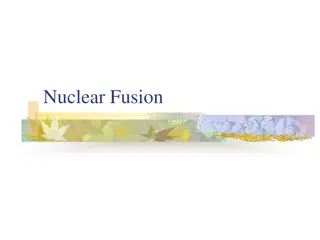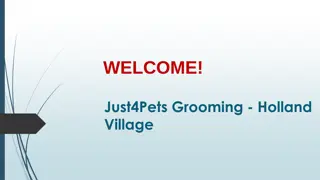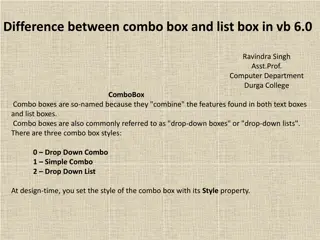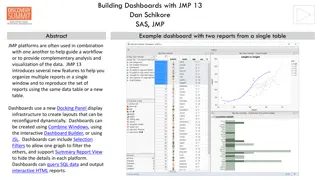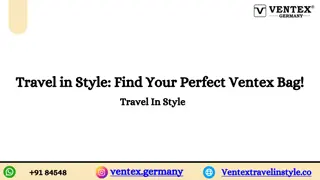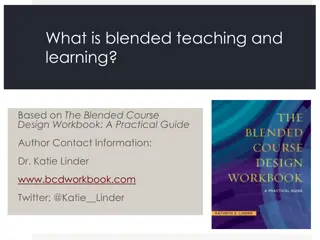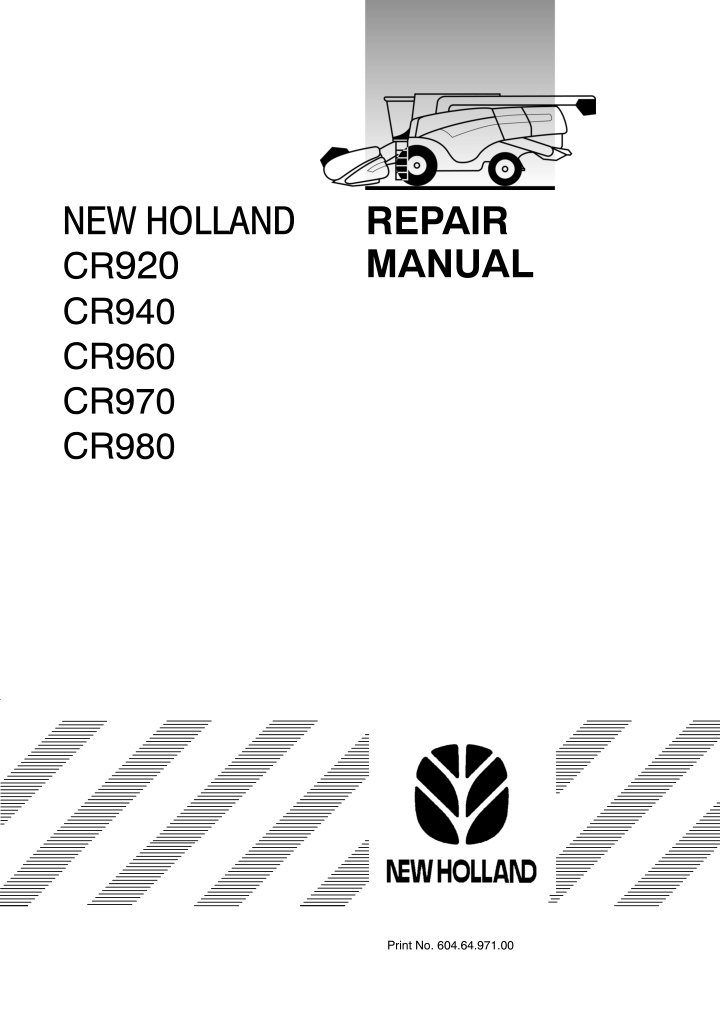
New Holland CR960 Combine Harvesters Service Repair Manual Instant Download
New Holland CR960 Combine Harvesters Service Repair Manual Instant Download
Download Presentation

Please find below an Image/Link to download the presentation.
The content on the website is provided AS IS for your information and personal use only. It may not be sold, licensed, or shared on other websites without obtaining consent from the author. If you encounter any issues during the download, it is possible that the publisher has removed the file from their server.
You are allowed to download the files provided on this website for personal or commercial use, subject to the condition that they are used lawfully. All files are the property of their respective owners.
The content on the website is provided AS IS for your information and personal use only. It may not be sold, licensed, or shared on other websites without obtaining consent from the author.
E N D
Presentation Transcript
NEW HOLLAND CR920 CR940 CR960 CR970 CR980 REPAIR MANUAL Print No. 604.64.971.00
CR920 - - CR940 - - CR960 - - CR970 CR980 COMBINES REPAIR MANUAL SECTIONS GENERAL INFORMATION ENGINE LIVE PTO TRANSMISSION FRONT MECHANICAL DRIVE HYDROSTATIC DRIVE BRAKES AND CONTROLS HYDRAULIC SYSTEMS TOWING HOOKS & BALLASTING STEERING AXLE SUSPENSION & TRACKS CLIMATE CONTROL ELECTRICAL SYSTEM PRODUCT FEEDING THRESHING . . . . . . . . . . . . . . . . . . . . . . . . . . . . . . . . . . . . . . . . . . . . . . . . . . . . . SEPARATION . . . . . . . . . . . . . . . . . . . . . . . . . . . . . . . . . . . . . . . . . . . . . . . . . . . . CLEANING SYSTEM . . . . . . . . . . . . . . . . . . . . . . . . . . . . . . . . . . . . . . . . . . . . . . GRAIN STORAGE . . . . . . . . . . . . . . . . . . . . . . . . . . . . . . . . . . . . . . . . . . . . . . . . ACCESSORIES . . . . . . . . . . . . . . . . . . . . . . . . . . . . . . . . . . . . . . . . . . . . . . . . . . . PLATFORM, CAB, BODYWORK AND DECALS . . . . . . . . . . . . . . . . . . . . . . . . . . . . . . . . . . . . . . . . . . . . . . . . . . . . . . . . . . . . . . . . . . . . . . . . . . . . . . . . . . . . . . . . . . . . . . . . . . . . . . . . . . . . . . . . . . . . . . . . . . . . . . . . . . . . . . . . . . . . . . . . . . . . . . . . . . . . . . . . . . . . . . . . . . . . . . . . . . . . . . . . . . . . . . . . . . . . . . . . . . . . . . . . . . . . . . . . . . . . . . . . . . . . . . . . . . . . . . . . . . . . . . . . . . . . . . . . . . . . . . . . . . . . . . . . . . . . . . . . . . . . . . . . . . . . . . . . . . . . . . . . . . . . . . . . . . . . . . . . . . . . . . . . . . . . . . . . . . . . . . . . . . . . . . . . . . . . . . . . . . . . . . . . . . . . . . . . . . . . . . . . . . . . . . . . . . . . . . . . . . . . . . . . . . . . . . . . . . . . . . . . . . . . . . . . . . . . . . . . . . . . . . . . . . . . . . . . . . . . . . . . . . . . . . . . . . . . . . . . . . . . . . . . . . . . . . . . . . . . . . . . . . . . . . . . . . . . . . . . . . . . . . . . . . . . . . . . . . . . . . . . . . . . . . . . . . . . . . . . . . . . . . . . . . . . . . . . . . . . . . . . . . 10 14 21 25 29 33 35 37 41 48 50 55 60 66 72 74 80 88 90 . . . . . . . . . . . . . . . . . . . . . . S E R V I C E
GENERAL INFORMATION 1 SECTION 00 - GENERAL INFORMATION CONTENTS Section 00 000 Description Foreword Part and Accessories Precautionary Statements Personal Safety Machine Safety Safety Precautions Personal Considerations Equipment Considerations General Considerations Operational Considerations Antifreeze (See Fire, Solvents, i.e., Isopropanol, Ethylene Glycol, Methanol) Battery Acids (See Acids and Alkalis) Brake and Clutch Linings and Pads (See Legal Aspects) Brazing (See Welding) . . . . . . . . . . . . . . . . . . . . . . . . . . . . . . . . . . . . . . . . . . . . . . . . . . . . . . . . . . Chemical Materials - General (See Legal Aspects) Clutch Linings and Pads (See Brake and Clutch Linings and Pads) Corrosion Protection Materials (See Solvents, Fire) Cutting (See Welding) . . . . . . . . . . . . . . . . . . . . . . . . . . . . . . . . . . . . . . . . . . . . . . . . . . . . . . . . . . Dewaxing (See Solvents and Fuels - Kerosene) Dusts . . . . . . . . . . . . . . . . . . . . . . . . . . . . . . . . . . . . . . . . . . . . . . . . . . . . . . . . . . . . . . . . . . . . . . . . . Electric Shock . . . . . . . . . . . . . . . . . . . . . . . . . . . . . . . . . . . . . . . . . . . . . . . . . . . . . . . . . . . . . . . . . Exhaust Fumes . . . . . . . . . . . . . . . . . . . . . . . . . . . . . . . . . . . . . . . . . . . . . . . . . . . . . . . . . . . . . . . . Fiber Insulation (See Dusts) . . . . . . . . . . . . . . . . . . . . . . . . . . . . . . . . . . . . . . . . . . . . . . . . . . . . . Fire (See Welding, Foams, Legal Aspects) . . . . . . . . . . . . . . . . . . . . . . . . . . . . . . . . . . . . . . . . . First Aid . . . . . . . . . . . . . . . . . . . . . . . . . . . . . . . . . . . . . . . . . . . . . . . . . . . . . . . . . . . . . . . . . . . . . . Foams- Polyurethane (See Fire) . . . . . . . . . . . . . . . . . . . . . . . . . . . . . . . . . . . . . . . . . . . . . . . . . . Fuels (See Fire, Legal Aspects, Chemicals - General, Solvents) Gas Cylinders (See Fire) . . . . . . . . . . . . . . . . . . . . . . . . . . . . . . . . . . . . . . . . . . . . . . . . . . . . . . General Workshop Tools and Equipment . . . . . . . . . . . . . . . . . . . . . . . . . . . . . . . . . . . . . . . . High-Pressure Air, Lubrication and Oil Test Equipment Legal Aspects . . . . . . . . . . . . . . . . . . . . . . . . . . . . . . . . . . . . . . . . . . . . . . . . . . . . . . . . . . . . . . . . Lubricants and Greases . . . . . . . . . . . . . . . . . . . . . . . . . . . . . . . . . . . . . . . . . . . . . . . . . . . . . . . . Paints (See Solvents and Chemical Materials - General) Solder (See Welding) . . . . . . . . . . . . . . . . . . . . . . . . . . . . . . . . . . . . . . . . . . . . . . . . . . . . . . . . . . Product Identification . . . . . . . . . . . . . . . . . . . . . . . . . . . . . . . . . . . . . . . . . . . . . . . . . . . . . . . . . Standard Torque Data for Hydraulic Tubes and Fittings Pipe Thread Fitting Torque . . . . . . . . . . . . . . . . . . . . . . . . . . . . . . . . . . . . . . . . . . . . . . . . . . . . Installation of ORFs (O-ring Flat Faced) Fittings Lubrication . . . . . . . . . . . . . . . . . . . . . . . . . . . . . . . . . . . . . . . . . . . . . . . . . . . . . . . . . . . . . . . . . . Sealants . . . . . . . . . . . . . . . . . . . . . . . . . . . . . . . . . . . . . . . . . . . . . . . . . . . . . . . . . . . . . . . . . . . . Page . . . . . . . . . . . . . . . . . . . . . . . . . . . . . . . . . . . . . . . . . . . . . . . . . . . . . . . . . . . . . . . . . . . . . . . . . . . . . . . . . . . . . . . . . . . . . . . . . . . . . . . . . . . . . . . . . . . . . . . . . . . . . . . . . . . . . . . . . . . . . . . . . . . . . . . . . . . . . . . . . . . . . . . . . . . . . . . . . . . . . . . . . . . . . . . . . . . . . . . . . . . . . . . . . . . . . . . . . . . . . . . . . . . . . . . . . . . . . . . . . . . . . . . . . . . . . . . . . . . . . . . . . . . . . . . . . . . . . . . . . . . . . . . . . . . . . . . . . . . . . . . . . . . . . . . . . . . . . . . . . . . . . . . . . . . . . . . . . . . . . . . . . . . . . . . . . . . . . . . . . . . . . . . . . . . . . . . . . . . . . . . . . . . . . . . . . . . . . . . . . . . . . . . . . . . . . . . . . . . . . . . . . . . . . . . . . . . . . . . . . . . . . . . . . . . . . . . . . . . . . . . . . . . . . . . . . . . . . . . . . . . . . . . . . . . . . . . . . . . . . . . . . . . . . . . . . . . . . . . . . . . . . . . . . . . . . . . . . . . . . . . . . . . . . . . . . . . . . . . . . . . . . . . . . . . . . . . . . . . . . . . . . . . . . . . . . . 2 2 3 3 3 3 3 4 5 5 7 7 7 7 7 8 8 8 8 8 8 9 9 9 9 9 . . . . . . . . . . . . . . . . . . . . . . . . . . . . . . . . . . . . . . . . . . . . . . . . . . . . . . . . . . . . . . . . . . . . . . . . . . . . . . . . . . . . . . . . . . . . . . . . . . . . . . . . . . . . . . . . . . . . . . . . . . . . . . . . . . . . . . . . . . . . . . . . . . . . . . . . . . . . . . . . . . . . . . . . . . . . . . . . . . . . . . . . . . . . . . . . . . . . . . . . . . . . . . . . . . . . . . . . . . . . . . . . . . . . . 10 10 10 11 11 11 11 11 15 18 19 19 20 23 . . . . . . . . . . . . . . . . . . . . . . . . . . . . . . . . . . . . . . . . . . . . . . . . . . . . . . . . . . . . . . . . . . . . . . . . . . . . . . . . . . . . . . . . . . . . . . . . . . . . . . . . . . . . . . . . . . . . . . . . 604.64.971.00 - - 05 - - 2003
https://www.ebooklibonline.com Hello dear friend! Thank you very much for reading. Enter the link into your browser. The full manual is available for immediate download. https://www.ebooklibonline.com
GENERAL INFORMATION 2 FOREWORD Appropriate service methods and correct repair procedures are essential for the safe, reliable operation of all equipment, as well as the personal safety of the individual performing the repair. released by NEW HOLLAND. The installation and or use of such products could have a negative effect upon the design characteristics of your machine and thereby affect its safety. NEW HOLLAND is not liable for any damage caused by the use of NON GENUINE NEW HOLLAND parts and accessories. This overhaul, and pressure-testing instructions using recommended procedures and equipment. Follow- ing these instructions will ensure the safe, efficient, and timely completion of the service or repair. Repair Manual provides troubleshooting, There are numerous variations in procedures, techniques, tools, and parts for servicing machines, as well as in the skill of the individual doing the work. This manual cannot possibly anticipate all such variations and provide advice or cautions as to each. Accordingly, anyone who departs from the instruc- tions provided in this manual must first establish that their personal safety, the safety of others, and the integrity of the machine will not be compromised by the choice of methods, tools or parts. The manual is divided into sections which are subdivided into chapters: Each chapter contains information on general operating principles, detailed inspection, overhaul and, where applicable, specific troubleshooting, special tools, and specifications. Any reference in this manual to right, left, rear, front, top, or bottom is as viewed from the operator s seat, looking toward the normal direction of travel. All data and illustrations in this manual are subject to variations in build specification. This information was correct at the time of issue, but New Holland policy is one of continuous improvement, and, the right to change specifications, equipment, or design at any time, without notice, is reserved. ABOUT IMPROVEMENTS New Holland is continually striving to improve its products. We must, therefore, reserve the right to make improvements or changes when it becomes practical and possible to do so, without incurring any obligation to make changes or additions to the equipment sold previously. ALL CHANGE WITHOUT NOTICE. SPECIFICATIONS ARE SUBJECT TO PART AND ACCESSORIES Genuine NEW HOLLAND parts and accessories have been specifically designed for NEW HOLLAND MACHINES. We would like to point out that NON GENUINE parts and accessories have not been examined and 604.64.971.00 - - 05 - - 2003
GENERAL INFORMATION 3 PRECAUTIONARY STATEMENTS SAFETY PRECAUTIONS Practically all service work involves the need to drive the combine. The operator s manual, supplied with each combine, contains detailed safety precautions relating to driving, operating, and servicing the combine. These precautions are as applicable to the service technician as they are to the operator and should be read, understood and practiced by all personnel. PERSONAL SAFETY Throughout this manual and on machine decals, you will find precautionary statements ( DANGER , WARNING , and CAUTION ) followed by specific instructions. These precautions are intended for the personal safety of you and those working with you. Please take the time to read them. Prior to undertaking any maintenance, repair, overhaul, dismantling or reassembly operations, whether within a workshop facility or in the field, consideration should be given to factors that may have an effect upon safety, not only upon the mechanic carrying out the work, but also upon bystanders. DANGER This word DANGER indicates an immediate hazardous situation that, if not avoided, will result in death or serious injury. The color associated with Danger is RED. WARNING PERSONAL CONSIDERATIONS The wrong clothes or carelessness in dress can cause accidents. Be sure to wear suitable clothing when servicing equipment. This word WARNING indicates a potentially hazardous situation that, if not avoided, could result in death or serious injury. The color associated with Warning is ORANGE. Some jobs require special protective equipment; be sure to use protective equipment when required. CAUTION This word CAUTION indicates a potentially hazardous situation that, if not avoided, may result in minor or moderate injury. It may also used to alert against unsafe practices. The color associated with Caution is YELLOW. Skin Protection Used motor oil may cause skin cancer. Follow work practices that minimize the amount of skin exposed and length of time used oil stays on your skin. Eye Protection The smallest eye injury may cause loss of vision. Injury can be avoided by wearing eye protection when engaged in chiselling, grinding, discing, welding, and painting. FAILURE WARNING , AND CAUTION INSTRUCTIONS MAY RESULT IN SERIOUS BODILY INJURY OR DEATH. TO FOLLOW THE DANGER , MACHINE SAFETY The additional ( IMPORTANT ) is followed by specific instructions. This statement is intended for machine safety. Breathing Protection Fumes, dust, and paint spray are unpleasant and harmful. These can be respiratory protection. precautionary statement avoided by wearing IMPORTANT: The word IMPORTANT is used to inform the reader of something he needs to know to prevent minor machine procedure is not followed. Hearing Protection Loud noise may damage your hearing, and the greater the exposure the worse the damage. If the noise is excessive, wear ear protection. damage if a certain INFORMATION Lifting Protection Avoidinjurybycorrectlyhandlingcomponents.Make sure you are capable of lifting the object. If in doubt get help. NOTE: Instructions used to identify and present supplementary information. 604.64.971.00 - - 05 - - 2003
GENERAL INFORMATION 4 Hand Protection It is advisable to use a protective cream before work to prevent irritation and skin contamination. After workcleanyourhandswithsoapandwater.Solvents such as mineral spirit and kerosene may harm the skin. Compressed Air The pressure from a compressed-air line often exceeds100PSI(690kPa).Itisperfectlysafeifused correctly. Any misuse may cause injury. Neverusecompressedairtoblowdust,filing,anddirt away from your work area unless the correct type of nozzle is fitted. Foot Protection Substantial or protective foot wear with reinforced toe caps will protect your feet from falling objects. Additionally, oil-resistant soles will help to avoid slipping. Compressed air is not a cleaning agent; it will only move dust from one place to another. Look around before using an air hose as bystanders may get grit into their eyes, ears, or skin. Special Clothing For certain work it may be necessary to wear flame or acid-resistant clothing. Hand Tools Many cuts, abrasions and injuries are caused by defective tools. Never use the wrong tool for the job, as this generally leads either to an injury, a poor job, or damaged equipment. EQUIPMENT CONSIDERATIONS Machine Guards Before using any machine, check to ensure that the machine guards are in position and serviceable. These guards not only prevent parts of the body or clothing coming in contact with the moving parts of the machine, but also ward off objects that might fly off the machine and cause injury. When removing or replacing hardened pins, use a copper or brass drift rather than a hammer. For dismantling, overhaul, and assembly of major and sub-components, always use the Special Service Tools recommended. These will reduce the work effort, labor time, and the repair cost. Electricity Electricity has become so familiar in day to day usage, that its potentially dangerous properties are oftenoverlooked.Misuse ofelectricalequipmentcan endanger life. Lifting Devices Alwaysensurethatliftingequipment,suchaschains, slings, lifting brackets, thoroughly checked and in good condition before use. If in doubt of weight capacity, select stronger equipment than is necessary. hooks and eyes, are Before using any electrical equipment particularly portable appliances - make a visual check to make sure that the wiring is not worn or frayed and that the plugs and sockets are intact. Make sure you know where the nearest isolating equipment is located. Never stand under a suspended load or raised implement. switch for your 604.64.971.00 - - 05 - - 2003
GENERAL INFORMATION 5 GENERAL CONSIDERATIONS OPERATIONAL CONSIDERATIONS Stop the engine, if at all possible, before performing any service. Solvents Usecleaningfluidsandsolventsthatareknowntobe safe. Certain types of fluids can cause damage to components such as seals and can cause skin irritation. Solvents should be checked that they are suitable not only for the cleaning of components and individual parts, but also that they do not affect the personal safety of the user. Place a warning sign on the combine which, due to service or overhaul, would be dangerous to start. Disconnect the battery leads if leaving such a unit unattended. Do not attempt to start the engine while standing beside the combine or attempt to bypass the safety start switch. Housekeeping Many injuries result from tripping over or slipping on objects or material left lying around by a careless worker. Prevent these accidents from occurring. If you notice a hazard, remove the hazard. Avoid prolonged running of the engine in a closed building or in an area with inadequate ventilation as exhaust fumes are highly toxic. Always turn the radiator cap to the first stop to allow pressure in the system to dissipate when the coolant is hot. A clean, hazard-free place of work improves the surroundings and daily environment for everybody. Fire Fire has no respect for persons or property. The destruction that a fire can cause is not always fully realized. Everyone must be constantly on guard. Never work beneath a combine which is on soft ground. Always take the unit to an area which has a hard working surface, preferably concrete. If it is found necessary to raise the combine for ease of servicing or repair, make sure that safe and stable supports are installed beneath axle housings, casings, etc., before starting work. Extinguish matches, cigars, and cigarettes before throwing them away. Work cleanly, disposing of waste materialinto proper containers. Use ladders or working platforms when servicing those areas of a combine that are not within easy reach. Locate the fire extinguishers and find out how to operate them. WARNING Do not panic - warn those near and raise the alarm. Do not use your hand to check for leaks. Use a piece of cardboard or paper to search for leaks. Stop the engine and relieve pressure before connecting or disconnecting lines. Tighten all connections before starting the engine or pressurizing lines. Ifanyfluidisinjectedinto theskin, obtainmedical attention immediately or gangrene may result. Do not allow or use an open flame near the combine fuel tank, battery, or component parts. First Aid In the type of work that mechanics are engaged in, dirt, grease, and fine dusts settle upon the skin and clothing. If a cut, abrasion or burn is disregarded it may become infected within a short time. Seek medical aid immediately. WARNING Cleanliness Cleanliness of the combine hydraulic system is essential for optimum performance. When carrying out service and repairs, plug all hose ends and component connections to prevent dirt entry. Escaping hydraulic/diesel fluid under pressure can penetrate the skin causing serious injury. Before loosening any hoses or tubes connecting implements to remote control valves, etc., switch off the engine, remove all pressure in the lines by operating levers several times. This will remove the danger of personal injury by oil pressure. Clean the exterior of all components before carrying out any form of repair. Dirt and abrasive dust can reduce the efficiency and working life of a component and lead to costly replacement. Use of a high-pressure washer or steam cleaner is recommended. 604.64.971.00 - - 05 - - 2003
GENERAL INFORMATION 6 ACIDS AND ALKALIS (SEE BATTERY ACIDS, I.E., CAUSTIC SODA, SULPHURIC ACID) Used in batteries and cleaning materials. Prior to pressure testing, make sure all hoses and connectors of the combine and the test equipment are in good condition and tightly sealed. Pressure readings must be taken with the gauges specified. The correct procedure should be rigidly observed to preventdamagetothesystem orthe equipment,and to eliminate the possibility of personal injury. Irritating and corrosive to the skin, eyes, nose and throat. Causes burns. Avoid splashes to the skin, eyes, and clothing. Wear suitable protective gloves and goggles. Can destroy ordinary protective clothing. Do not breathe mists. Always lower equipment to the ground when leaving the combine. Beware of overhead power, electric or telephone cables when travelling. Ensure access to water and soap is readily available for splashing accidents. Do not park or attempt to service a combine on an incline. If unavoidable, take extra care and block all wheels. ADHESIVES AND SEALERS (SEE FIRE) CAUTION Highly flammable, combustible. Observe recommended precautions as indicated in this Repair Manual when dismantling the air conditioning system as escaping refrigerant can cause frostbite. Generallyshouldbestoredin NOSMOKING areas; cleanliness and tidiness while in use should be observed, i. e., from applications where possible, disposable paper should be dispensed to cover benches. Containers, including secondary contain- ers, should be labelled. Prior to removing wheels and tires from thecombine, check to determine whether additional ballast (liquid or weights) has been added. Seek assistance and use suitable equipment to support the weight of the wheel assembly. Solvent-Based Adhesives/Sealers (See Solvents) Follow manufacturer s Instructions When inflating tires, beware of over inflation - constantly check the pressure. Over inflation can cause tires to burst and result in personal injury. Water-Based Adhesives/Sealers Those based on polymer emulsions and rubber lattices may contain small amounts of volatile toxic and harmful chemicals. HEALTH AND SAFETY PRECAUTIONS Many of the procedures associated with vehicle maintenance and repair involve physical hazards or otherriskstohealth.Thissectionlists,alphabetically, some of these hazardous operations, materials and equipment associated with them. The precautions necessary to avoid these hazards are identified. Skin and eye contact should be avoided, and adequate ventilation provided during use. Follow manufacturer s Instructions Resin-BasedAdhesive/Sealers(i.e.,Epoxideand Formaldehyde Resin Based) Mixing should only be carried out in well-ventilated areas as harmful or toxic volatile chemicals may be released. The list is not inclusive; all operations, procedures, and handling of materials should be carried out with health and safety in mind. Skin contact with uncured resins and hardeners can result in irritation, dermatitis, and absorption of toxic, or harmful chemicals through the skin. Splashes can damage the eyes. Provide adequate ventilation; avoid skin and eye contact. Follow manufacturer s instructions. 604.64.971.00 - - 05 - - 2003
SECTION 10 - - ENGINE - - CHAPTER 1 1 SECTION 10 - - ENGINE Chapter 1 - - 7.5L Engine CONTENTS Section 10 000 Description Specifications Page . . . . . . . . . . . . . . . . . . . . . . . . . . . . . . . . . . . . . . . . . . . . . . . . . . . . . . . . . . . . . . . . 2 Tightening Torques . . . . . . . . . . . . . . . . . . . . . . . . . . . . . . . . . . . . . . . . . . . . . . . . . . . . . . . . . . . . 8 Special Tools . . . . . . . . . . . . . . . . . . . . . . . . . . . . . . . . . . . . . . . . . . . . . . . . . . . . . . . . . . . . . . . . . 9 Troubleshooting . . . . . . . . . . . . . . . . . . . . . . . . . . . . . . . . . . . . . . . . . . . . . . . . . . . . . . . . . . . . . . . 11 Description and Operation . . . . . . . . . . . . . . . . . . . . . . . . . . . . . . . . . . . . . . . . . . . . . . . . . . . . . 15 10 001 Engine Overhaul - Introduction . . . . . . . . . . . . . . . . . . . . . . . . . . . . . . . . . . . . . . . . . . . . . . . . . 22 Injection Pump Timing Check . . . . . . . . . . . . . . . . . . . . . . . . . . . . . . . . . . . . . . . . . . . . . . . . . . 23 Overhaul . . . . . . . . . . . . . . . . . . . . . . . . . . . . . . . . . . . . . . . . . . . . . . . . . . . . . . . . . . . . . . . . . . . . 27 10 101 Cylinder Head, Valves and Related Parts . . . . . . . . . . . . . . . . . . . . . . . . . . . . . . . . . . . . . . . . 27 10 106 Engine Front Cover and Timing Gears . . . . . . . . . . . . . . . . . . . . . . . . . . . . . . . . . . . . . . . . . . 40 10 102 Oil Pan . . . . . . . . . . . . . . . . . . . . . . . . . . . . . . . . . . . . . . . . . . . . . . . . . . . . . . . . . . . . . . . . . . . . . 45 10 103 Flywheel . . . . . . . . . . . . . . . . . . . . . . . . . . . . . . . . . . . . . . . . . . . . . . . . . . . . . . . . . . . . . . . . . . . . 46 10 102 Rear Cover Plate . . . . . . . . . . . . . . . . . . . . . . . . . . . . . . . . . . . . . . . . . . . . . . . . . . . . . . . . . . . . 48 10 102 Oil Pump . . . . . . . . . . . . . . . . . . . . . . . . . . . . . . . . . . . . . . . . . . . . . . . . . . . . . . . . . . . . . . . . . . . . 50 10 102 Oil Pressure Relief Valve . . . . . . . . . . . . . . . . . . . . . . . . . . . . . . . . . . . . . . . . . . . . . . . . . . . . . . 52 10 106 Camshaft . . . . . . . . . . . . . . . . . . . . . . . . . . . . . . . . . . . . . . . . . . . . . . . . . . . . . . . . . . . . . . . . . . . 53 Camshaft Bearings . . . . . . . . . . . . . . . . . . . . . . . . . . . . . . . . . . . . . . . . . . . . . . . . . . . . . . . . . . . 54 10 105 Pistons . . . . . . . . . . . . . . . . . . . . . . . . . . . . . . . . . . . . . . . . . . . . . . . . . . . . . . . . . . . . . . . . . . . . . 56 Connecting Rod Bush Replacement . . . . . . . . . . . . . . . . . . . . . . . . . . . . . . . . . . . . . . . . . . . . 58 10 105 Cylinder Block Overhaul . . . . . . . . . . . . . . . . . . . . . . . . . . . . . . . . . . . . . . . . . . . . . . . . . . . . . . 60 Cylinder Bore . . . . . . . . . . . . . . . . . . . . . . . . . . . . . . . . . . . . . . . . . . . . . . . . . . . . . . . . . . . . . . . . 61 Sleeving - Boring and Honing . . . . . . . . . . . . . . . . . . . . . . . . . . . . . . . . . . . . . . . . . . . . . . . . . . 62 Installing Piston Assembly Into Block . . . . . . . . . . . . . . . . . . . . . . . . . . . . . . . . . . . . . . . . . . . 65 10 103 Crankshaft . . . . . . . . . . . . . . . . . . . . . . . . . . . . . . . . . . . . . . . . . . . . . . . . . . . . . . . . . . . . . . . . . . 66 10 003 Front Crankshaft Cassette Oil Seal Replacement . . . . . . . . . . . . . . . . . . . . . . . . . . . . . . . . . 71 10 001 Engine Compression Test . . . . . . . . . . . . . . . . . . . . . . . . . . . . . . . . . . . . . . . . . . . . . . . . . . . . . 77 604.64.971.00 - - 05 - - 2003
SECTION 10 - - ENGINE - - CHAPTER 1 15 DESCRIPTION AND OPERATION 2 The 7.5 Litre engine is a 6-cylinder turbocharged and aftercooled, having a bore of 111.8 mm (4.4 ) and a stroke of 127 mm (5.0 ) which generates a displacement of 7.5L (456 in3). The engine uses a mechanical or electronically controlled in line injection pump depending on model and has been designed to meet current emission regulations and must only be serviced by an authorized service agent. For a detailed description and operation of the fuel system, reference must be made to the Fuel System chapter in this Section of the manual. Allenginesfeaturecrossflowcylinderheads,withthe inlet and exhaust manifolds on opposite sides of the cylinder head. The fuel and air combustion process, takes place in the specially designed bowl in the crown of the pistons. Cylinder Block Assembly The cylinder block is an alloy cast iron with deep cylinder skirts, and water jackets for cooling the cylinders. The cylinder bores are machined integral with the cylinder block, during the manufacturing process. Cylinders are in line and vertical and numbered 1 to 6from the frontto therear ofthe engine.They canbe bored oversize for the fitment of sleeves, which are available in service. The oil pan is the reservoir for the engine oil lubrication system and a cast iron front cover on the front of the engine covers the timing gear assembly. 604.64.971.00 - - 05 - - 2003
SECTION 10 - - ENGINE - - CHAPTER 1 16 Cylinder Head Assembly The cylinder head incorporates an inlet and exhaust valve per cylinder with the valve rocker arm shaft assembly bolted to the cylinder block through the cylinder head. Cylinder head retaining bolts are evenly spaced with a six point pattern around each cylinder, this ensures an even clamping load across the cylinder head area. The intake and exhaust manifolds are bolted to the head, the intake manifold is mounted on the right hand side of the engine, with the diesel injectors mounted outside the rocker cover. The exhaust manifold is mounted on the left hand side of the engine. Water outlet connections and thermostats being attached to the front of the cylinder block. Valve guides are integral in the cylinder head, and valves with oversize stems are available in service. Special replaceable sintered iron valve seats are pressed into each valve port during manufacture and oversize valve seats also available in service. All valves are fitted with positive valve rotators and valvestemoilseals.Valveclearanceismaintainedby adjustment of the self locking adjusting screw, mounted in each of the rocker arms. 3 Camshaft Assembly The camshaft runs in 5 replaceable bearings. The camshaft drive gear is in mesh with and driven bythe camshaft idler gear which is driven by the crankshaft timing gear. Camshaft end thrust is controlled by a thrust plate bolted to the block, and located between the camshaft gear and the front camshaft journal. Ahelicalgearismountedontherearof thecamshaft, and drives the engine oil lubrication pump mounted forward of the flywheel. 396- -E- -16 T I 4 Crankshaft Assembly The crankshaft is supported in the cylinder block by 7 main bearings. The crankshaft is manufactured from steel with machined finished crank webs End thrust is controlled by a thrust bearing incorporated in the center main bearing of the crankshaft. An external damper is fitted to the crankshaft pulley to ensure smooth running operation. Front and rear crankshaft oil sealing is effected by cassette type seals that are designed for long and durable service life. 5 604.64.971.00 - - 05 - - 2003
SECTION 10 - - ENGINE - - CHAPTER 1 17 Connecting Rods Connecting rods Teepee (wedge) shaped at the small end have been designed to reduce the reciprocating weight at connecting rods are of a heavy beam construction and are assembled as a matched set to eachengine. They are retained in position by the connecting rod big end cap and secured by two bolts per rod. The small end of the connecting rod is fitted with a replaceable bronze bushing, through which the free floating piston pin is fitted. The steel pin being held in place within the piston by two snap rings. the piston end. The 6 Pistons Pistons are constructed of an aluminium silicon alloy with an iron insert for the top ring. The combustion chamber being recessed into the piston crowns. Each piston has two compression rings and one oil control ring, to reduce friction and increase positive sealing. All rings are located above the piston pin. A Engines with Electronically Controlled Injection Pump B Engines with Mechanically Controlled Injection Pump 7 Manifolds Thecrossflowdesignaluminiumintake,andcastiron exhaust manifolds, are on opposite sides of the cylinder head. This is designed to maintain balanced heat distribution within the cylinder head. The configuration of the manifoldsalso ensuresminimum heat transfer to the intake manifold. A grid heater is fitted to the intake manifold to assist in cold starting of the engine when coolant water temperature is below 30 C. 8 604.64.971.00 - - 05 - - 2003
SECTION 10 - - ENGINE - - CHAPTER 1 18 Timing Gears The crankshaft timing gear is heated and press fitted on to the front of the crankshaft, to a high degree of accuracyduringmanufacturing.Thisenablesprecise timing being maintained during the life of the engine. The crankshaft gear, 2, drives the idler gear, 3,which is attached to the front of the cylinder block. The idler gear then drives the camshaft gear, 1, and the injection pump gear, 4. The camshaft gear is bolted to the front of the camshaft, and is keyed to maintain position of the gear on the camshaft. 4 1 . .. . . 2 3 P396- -E- -36 9 Lubrication System 10 Engine Lubrication System Lubricationoftheengine,Figure 10,is maintainedby arotortypeoilpumpmountedintherearoftheengine block, forward of the flywheel on the left hand side of the engine. TA6010058 11 604.64.971.00 - - 05 - - 2003
SECTION 10 - - ENGINE - - CHAPTER 1 19 The oil pump is driven from the rear of the camshaft and draws oil from the engine oil pan through a tube and screen assembly. 12 Aspringloadedreliefvalveisintegralwiththedummy oil filter head mounted on the left hand side of the engine block and prevents over pressurisation of the system. 3 396- -E- -18 TI 13 The spin on type oil filter is mounted at the rear of the engine. 14 604.64.971.00 - - 05 - - 2003
SECTION 10 - - ENGINE - - CHAPTER 1 20 Oil flows from the filter to the main oil gallery, which runs the length of the cylinder block and also intersects the camshaft follower chamber. The main gallery supplies oil to the crankshaft main bearings, connecting rods and both big and small ends. The underside of the pistons and pins, are lubricated by oil pressure jets mounted adjacent to each main journal housing. The camshaft drive gear bushing is pressure lubricated through a drilled passage from the front main bearing. The gear has small oil passages machined on both sides allowing excess oil to escape. 396- -E- -26 TI 15 An intermittent flow of oil is directed to the valve rockerarmshaftassemblyviaadrilledpassageinthe cylinder block. This is located vertically above No.1 camshaft bearing, 1, and aligns to a hole in the cylinder head. The rotation of the camshaft allows a controlled intermediate flow of lubrication. 1 396- -E- -16 T I 16 Timing gears are lubricated by splashed oil from the cam follower chamber, and the pressure lubricated camshaft drive gear bushing. P396- -E- -36 17 604.64.971.00 - - 05 - - 2003
SECTION 10 - - ENGINE - - CHAPTER 1 21 The turbocharger is supplied with oil from the oil filter support housing, 1, mounted on the left hand side of the engine. 18 The fuel injection pump is pressure lubricated from a port, 1, on the right hand side of the engine block. Thefuelpumpis eitherelectronically controlledusing an electronic control unit, Figure 19 or mechanically controlled depending on model build, Figure 20. 19 20 604.64.971.00 - - 05 - - 2003
Suggest: If the above button click is invalid. Please download this document first, and then click the above link to download the complete manual. Thank you so much for reading
SECTION 10 - - ENGINE - - CHAPTER 1 22 ENGINE OVERHAUL - - INTRODUCTION In the following procedures and illustrations the engine is shown removed from the vehicle however there are certain operations that can be performed with the engine installed. For concerns relating to the fuel system refer to the Fuel System chapter in this manual. On engines fitted with the electronically controlled fuel injection pumprefertothe EngineFaultCodes chapterinthe electrical section of the manual. Where it is necessary to remove the engine use a suitable hoist or overhead gantry and standard engineering procedures. Removal of the engine is described in Section 10, Chapter 3 of this manual. Operations or repairs that can be performed with the engine still in the vehicle. 1. Front timing cover, Pump drive gear and idler gear. Removal of engine is required in order to remove and replace the camshaft timing gear. 2. Front pulley and damper assembly. 3. Cylinder head and associated inlet and exhaust components. 4. Fuel injection pump removal and timing. 5. Water pump, thermostat, components . 6. Oil pump relief valve. 7. Turbocharger. Dismantle techniques and by referring to the appropriate overhaul sections of this chapter. Always refer to the specification section as necessary. the engine following conventional NOTE: Where it is necessary to remove additional itemstogainaccesstothecomponentsontheengine Refer to Chapter 3 Remove and Replace, 7.5L Engine . and associated NOTE: All gaskets, seals, and O rings must be replaced during re-assembly. Where new sealant is to be applied refer to Engine Specifications . 604.64.971.00 - - 05 - - 2003
https://www.ebooklibonline.com Hello dear friend! Thank you very much for reading. Enter the link into your browser. The full manual is available for immediate download. https://www.ebooklibonline.com

